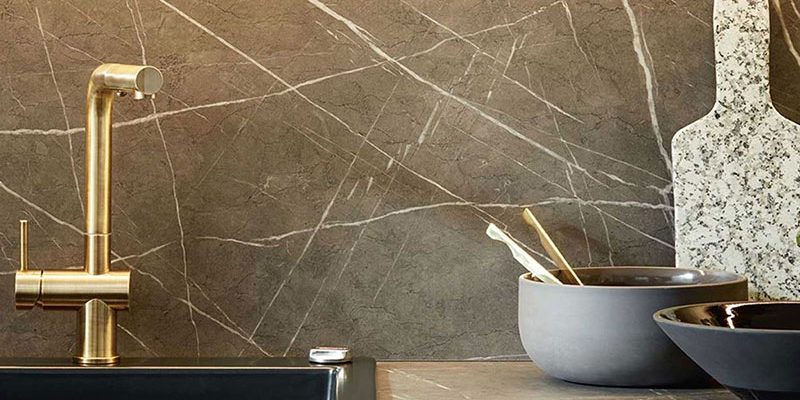Define your needs
Before you start designing your fitted kitchen, start by defining your needs. Think about your lifestyle, your cooking habits and the number of people using the kitchen. This way, it will be easier for you to choose the appliances you will need, the necessary work surface, the appropriate storage and lighting.
Establish a budget for your equipped kitchen
Establishing a budget for your fitted kitchen is crucial for the success of your project. For this, determine the amount you are willing to invest for your kitchen, in order to have a clear idea of what you can afford and what you cannot afford. If you have a limited budget, you can consider the option of buying furniture designed in less expensive materials to design the cabinets, the worktop as well as the kitchen splashback. On the other hand, if your budget allows it, you can invest in high-quality materials and high-end household appliances.
Plan the space available in the room
When planning the space available in your fitted kitchen, remember to take into account the ergonomics of the room. Ergonomics concerns the arrangement of elements to allow easy and comfortable use of the kitchen. Imagine how you currently use your kitchen and what you would like to improve. For example, if you like to cook with the family, you might want to include a larger cooking area and a center island to help with circulation around the kitchen. And, when you use your microwave frequently, you’ll probably want to place it at a convenient height, rather than leaving it on the counter.
By planning the space efficiently, you can create a fitted kitchen that perfectly meets your culinary needs.
Choose quality materials
The materials used for the furniture, the worktop and the floor coverings of your fitted kitchen must be of high quality to ensure their durability.
Because of this, cabinets, drawers, and shelves should be made with premium materials such as solid wood, plywood, or high-density particleboard. The work plans are ideally scratch and heat resistant. This is the case with quality materials such as granite, quartz or hardwood.
As far as floor coverings are concerned, these should be easy to clean and stain resistantsuch as ceramic tile or vinyl.
Maximize storage
The kitchen is a room that needs a lot of storage to store appliances, cooking utensils, food, etc. To do this, maximize storage space by using smart cabinets and drawers. Also consider using shelves and pot holders to optimize the available space.
Lighting
Lighting is crucial in a fitted kitchen. Make sure you have enough light in work areas to make meal preparation easier. Use accent lights to highlight certain elements of your kitchen, such as marble worktops or glass shelves. And, by opting for LED luminaires, you are sure to save energy.
Consider electrical outlets
The kitchen requires a lot of electrical outlets for appliances, phone chargers, etc. Think about their positioning to make them easier to use. Make sure you have enough electrical outlets to avoid trailing cables.
Avoid overload
Avoid overloading your fitted kitchen by adding too many decorative elements. Keep it minimalist and focus on functionality. This will allow you to maximize the available storage space and facilitate circulation in your kitchen.
Consult a professional
If you have any doubts about the design of your fitted kitchen, do not hesitate to consult a professional! An interior designer or kitchen designer can help you optimize your kitchen space and make the best choices based on your budget and your needs.
They can also advise you on materials, colors and finishes to match your decorating style. By working with a professional, you can be sure that your fitted kitchen will be perfectly adapted to your needs and your lifestyle.
Test before you buy
Before buying your fitted kitchen, test the different elements to make sure they meet your needs. Try the appliances, open and close the drawers, test the countertop, etc. This will allow you to make sure that everything is working properly and that you are happy with the quality of the materials.
Remember that you will be using your fitted kitchen on a daily basis, so it is important to invest in equipment that is practical, functional and durable.
Focus on the aesthetics of your fitted kitchen!
Although functionality is important, don’t neglect the aesthetics of your fitted kitchen. Choose colors and finishes that match your decorating style and reflect your personality.
Also consider thevisual harmony of your fitted kitchen with the rest of your home. By creating an equipped kitchen that is both beautiful and functional, you can enjoy a pleasant and welcoming living space.

